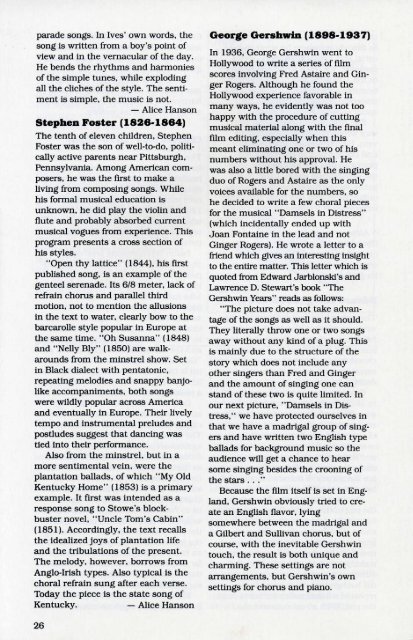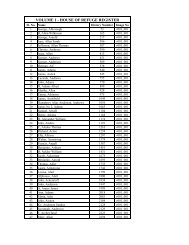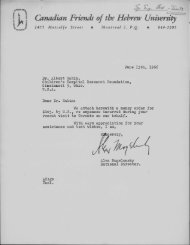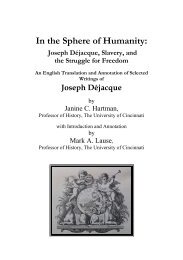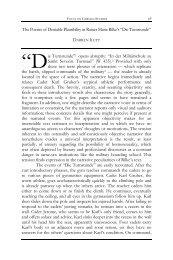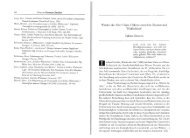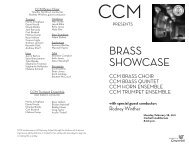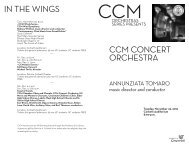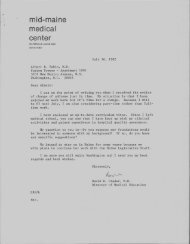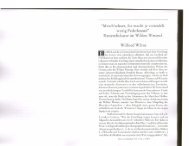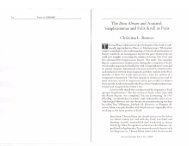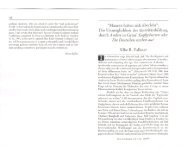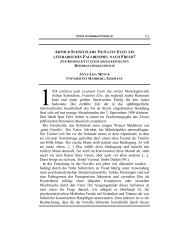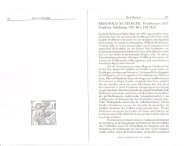Octavo, The Dale Warland Singers Program ... - UC DRC Home
Octavo, The Dale Warland Singers Program ... - UC DRC Home
Octavo, The Dale Warland Singers Program ... - UC DRC Home
You also want an ePaper? Increase the reach of your titles
YUMPU automatically turns print PDFs into web optimized ePapers that Google loves.
parade songs. In Ives' own words, the<br />
song is written from a boy's point of<br />
view and in the vernacular of the day.<br />
He bends the rhythms and harmonies<br />
of the simple tunes, while exploding<br />
all the cliches of the style. <strong>The</strong> sentiment<br />
is simple, the music is not.<br />
- Alice Hanson<br />
Stephen Foster (1828-1884)<br />
<strong>The</strong> tenth of eleven children, Stephen<br />
Foster was the son of well-to-do, politically<br />
active parents near Pittsburgh,<br />
Pennsylvania. Among American composers,<br />
he was the first to make a<br />
ltvtng from composing songs. While<br />
his formal musical education is<br />
unknown, he did play the violin and<br />
flute and probably absorbed current<br />
musical vogues from experience. This<br />
program presents a cross section of<br />
his styles.<br />
"Open thy lattice" (1844), his first<br />
published song, is an example of the<br />
genteel serenade. Its 6/8 meter, lack of<br />
refrain chorus and parallel third<br />
motion, not to mention the allusions<br />
in the text to water, clearly bow to the<br />
barcarolle style popular in Europe at<br />
the same time. "Oh Susanna" (1848)<br />
and "Nelly Bly" (1850) are walkarounds<br />
from the minstrel show. Set<br />
in Black dialect with pentatonic,<br />
repeating melodies and snappy banjolike<br />
accompaniments, both songs<br />
were wildly popular across America<br />
and eventually in Europe. <strong>The</strong>ir lively<br />
tempo and instrumental preludes and<br />
postludes suggest that dancing was<br />
tied into their performance.<br />
Also from the minstrel, but in a<br />
more sentimental vein, were the<br />
plantation ballads, of which "My Old<br />
Kentucky <strong>Home</strong>" (1853) is a primary<br />
example. It first was intended as a<br />
response song to Stowe's blockbuster<br />
novel, "Uncle Tom's Cabin"<br />
(1851). Accordingly, the text recalls<br />
the idealized joys of plantation life<br />
and the tribulations of the present.<br />
<strong>The</strong> melody, however, borrows from<br />
Anglo-Irish types. Also typical is the<br />
choral refrain sung after each verse.<br />
Today the piece is the state song of<br />
Kentucky. - Alice Hanson<br />
26<br />
George Gershwin (1898-1937)<br />
In 1936, George Gershwin went to<br />
Hollywood to write a series of film<br />
scores tnvolving Fred Astaire and Ginger<br />
Rogers. Although he found the<br />
Hollywood experience favorable in<br />
many ways, he evidently was not too<br />
happy with the procedure of cutting<br />
musical material along with the final<br />
film editing, especially when this<br />
meant eliminating one or two of his<br />
numbers without his approval. He<br />
was also a little bored with the singing<br />
duo of Rogers and Astaire as the only<br />
voices available for the numbers, so<br />
he decided to write a few choral pieces<br />
for the musical "Damsels in Distress"<br />
(which incidentally ended up with<br />
Joan Fontaine in the lead and not<br />
Ginger Rogers). He wrote a letter to a<br />
friend which gives an interesting insight<br />
to the entire matter. This letter which is<br />
quoted from Edward Jarblonski's and<br />
Lawrence D. Stewart's book "<strong>The</strong><br />
Gershwin Years" reads as follows:<br />
"<strong>The</strong> picture does not take advantage<br />
of the songs as well as it should.<br />
<strong>The</strong>y literally throw one or two songs<br />
away without any kind of a plug. This<br />
is mainly due to the structure of the<br />
story which does not include any<br />
other singers than Fred and Ginger<br />
and the amount of singing one can<br />
stand of these two is quite limited. In<br />
our next picture, "Damsels in Distress,"<br />
we have protected ourselves in<br />
that we have a madrigal group of singers<br />
and have written two English type<br />
ballads for background music so the<br />
audience will get a chance to hear<br />
some singing besides the crooning of<br />
the stars ... "<br />
Because the film itself is set in England,<br />
Gershwin obviously tried to create<br />
an English flavor, lying<br />
somewhere between the madrigal and<br />
a Gilbert and Sullivan chorus, but of<br />
course, with the inevitable Gershwin<br />
touch, the result is both unique and<br />
charming. <strong>The</strong>se settings are not<br />
arrangements, but Gershwin's own<br />
settings for chorus and piano.


